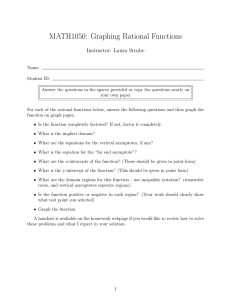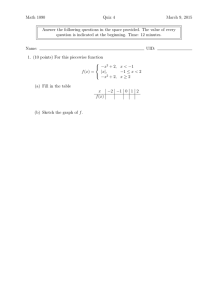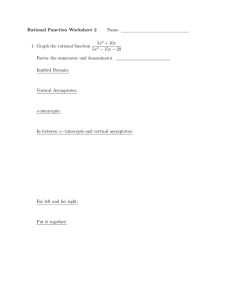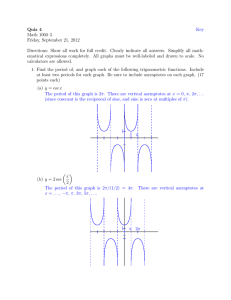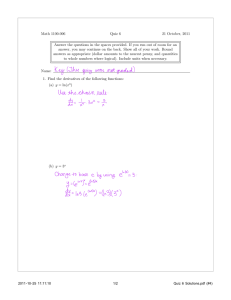MA112 Dr. Byrne Fall 2010
advertisement
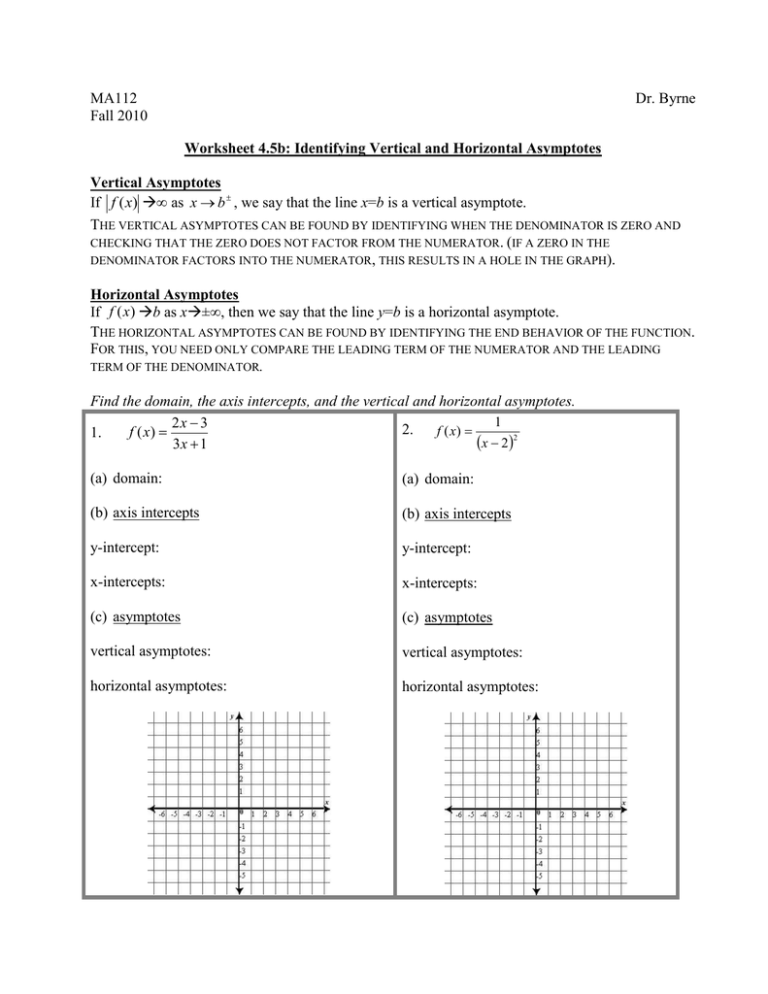
MA112 Fall 2010 Dr. Byrne Worksheet 4.5b: Identifying Vertical and Horizontal Asymptotes Vertical Asymptotes If f (x) ∞ as x b , we say that the line x=b is a vertical asymptote. THE VERTICAL ASYMPTOTES CAN BE FOUND BY IDENTIFYING WHEN THE DENOMINATOR IS ZERO AND CHECKING THAT THE ZERO DOES NOT FACTOR FROM THE NUMERATOR. (IF A ZERO IN THE DENOMINATOR FACTORS INTO THE NUMERATOR, THIS RESULTS IN A HOLE IN THE GRAPH). Horizontal Asymptotes If f (x) b as x±∞, then we say that the line y=b is a horizontal asymptote. THE HORIZONTAL ASYMPTOTES CAN BE FOUND BY IDENTIFYING THE END BEHAVIOR OF THE FUNCTION. FOR THIS, YOU NEED ONLY COMPARE THE LEADING TERM OF THE NUMERATOR AND THE LEADING TERM OF THE DENOMINATOR. Find the domain, the axis intercepts, and the vertical and horizontal asymptotes. 1 2x 3 2. f ( x) f ( x) 1. x 2 2 3x 1 (a) domain: (a) domain: (b) axis intercepts (b) axis intercepts y-intercept: y-intercept: x-intercepts: x-intercepts: (c) asymptotes (c) asymptotes vertical asymptotes: vertical asymptotes: horizontal asymptotes: horizontal asymptotes: 3. f ( x) x3 4x x2 x vertical asymptotes: horizontal asymptotes: 4. 2 x 2 18 f ( x) 2 x 16 5. f ( x) 5x 4 x4 1 (a) domain: (a) domain: (b) axis intercepts (b) axis intercepts y-intercept: y-intercept: x-intercepts: x-intercepts: (c) asymptotes (c) asymptotes vertical asymptotes: vertical asymptotes: horizontal asymptotes: horizontal asymptotes:

